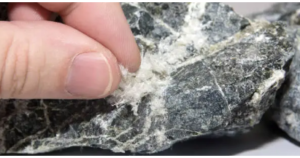Air testing (PCM sampling) for clearance asbestos removal work is part of the four-stage clearance process and should be utilised during and post abatement works to monitor air quality levels.
 Air is drawn through a filter, and fibres are counted using phase contrast microscopy – which is relatively fast and cost-effective but may not offer as precise analysis as transmission electron microscopy.
Air is drawn through a filter, and fibres are counted using phase contrast microscopy – which is relatively fast and cost-effective but may not offer as precise analysis as transmission electron microscopy.
What is Asbestos?
Asbestos air testing Adelaide respirable asbestos fibre concentration levels. A sampling technique draws air through a filter for analysis under a microscope to calculate fibre concentration levels and assess exposure levels accordingly. Incorporation of control measures, where necessary, also allows exposure levels to be determined more precisely and implemented if necessary.
Asbestos is a group of naturally occurring fibrous minerals known for their heat resistance and strength, commonly used in insulation, floor tiles, automotive brakes, and clutches. Exposure to asbestos may lead to serious lung conditions, including mesothelioma; consequently, it has been banned in many countries due to its carcinogenic properties.
Asbestos air contaminants vary depending on what causes its release into the environment. Most often, asbestos is released when its material source is disturbed – for instance, during products containing asbestos, demolition work or home renovation projects.
How Does Asbestos Get in the Air?
Asbestos fibres disintegrate into microscopic particles that become airborne, exposing you to lung-damaging asbestos fibres that could endanger health – including lung disease and mesothelioma if kept inside for extended periods. Exposure increases dramatically if asbestos fibres remain trapped within your lungs for an extended period.
Asbestos can be found in many building materials, such as insulation, drywall, roofing shingles, floor tiles and pipe wraps. When these materials are disturbed or removed without proper safety precautions, asbestos fibres may become airborne, while natural processes like weathering and erosion of contaminated soil also contribute.
Once inhaled, asbestos fibres may remain lodged within your lungs for years despite your natural defences, building up and leading to serious health complications like lung disease, mesothelioma or cancer.
Not only can asbestos be inhaled through breathing, but it can also be swallowed through drinking contaminated water (i.e. water that has passed through asbestos cement pipes) or coughing up asbestos fibres and then swallowing the saliva as part of their exposure.
To prevent unnecessary exposure, only asbestos air testing Adelaide should handle or work on materials containing asbestos. If you suspect your home or workplace may contain asbestos, have a professional perform an air test to detect its presence; an air test is also useful after an abatement project to verify whether all the asbestos has been successfully eliminated from the atmosphere.
Are Asbestos Fibers Dangerous?
Ideally, asbestos-containing materials (ACM) should remain undisturbed and undamaged to minimise exposure risk. However, when ACM is disturbed in any way that creates fibres that become airborne, inhalation risks include lung cancer and mesothelioma; fibres may travel deep into a person’s lungs and cause permanent damage that will last decades after initial inhalation.
Testing for asbestos requires collecting samples of suspected materials for laboratory analysis. It may involve traditional techniques like hand sampling under a microscope and more modern technologies like laser particle counters that provide real-time results without waiting days to see results.
Most asbestos-related diseases are the result of occupational exposure. People working in mining and processing facilities, the military or who have served with asbestos as part of their job are especially at risk; family members of veterans as well as people who reside nearby mining or processing facilities, also run an increased risk of asbestos exposure and may require compensation if diagnosed with medical conditions such as mesothelioma as a result of being exposed.
How Do I Know If I Have Asbestos?
Only lab testing or Asbestos air testing Adelaide can accurately detect asbestos because its microscopic fibres cannot be seen with the naked eye and do not emit any odour. Asbestos may be present in many home materials, requiring special training to identify it.
Asbestos can be especially hazardous when its surface crumbles into tiny fibres that become airborne and inhaled or swallowed into the lungs, where they become embedded into lung tissue and cause diseases such as pleural effusions, asbestosis or mesothelioma – it usually takes 15-60 years after exposure for symptoms to appear.
